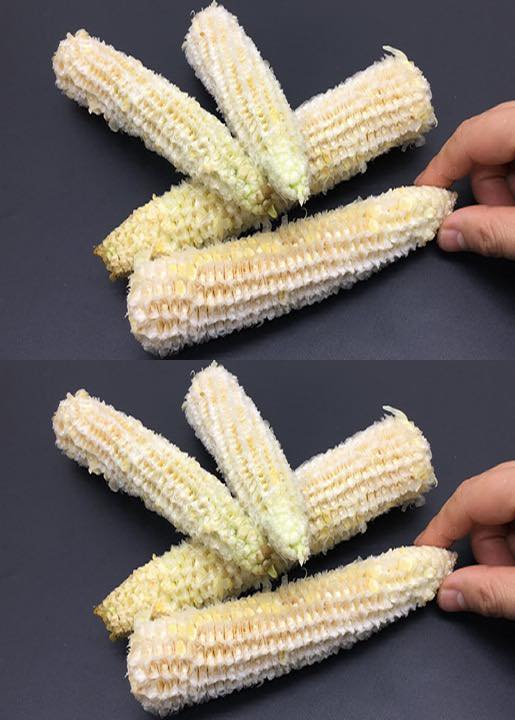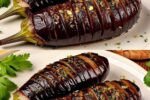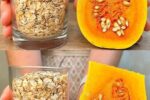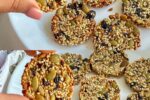Discover surprising uses for corn on the cob that will change the way you use this ingredient.
After enjoying a delicious boiled or roasted corn, what happens to the corn on the cob in your home? If the answer is “garbage,” it might be time to rethink this habit.
Few people know, but corn cobs have incredible uses and can bring many health benefits, in addition to being useful for cleaning the house.
Discover below 3 practical ways to reuse corn cobs in your daily life. You will be surprised!
Corncob tea
This tip is perfect for those looking for a natural, tasty drink with medicinal properties.
Corncob tea aids digestion and contributes to the proper functioning of the spleen and stomach, according to traditional medicine.
Furthermore, it has diuretic, anti-inflammatory and antibacterial properties.
Thanks to its high concentration of fiber, it also helps to relieve the symptoms of constipation.
Another little-known advantage is that it can be used as a natural mouthwash, promoting gum health due to the presence of beta-sitosterol, a compound with protective and regenerative action.
How to prepare:
Wash the corn cobs well and cut into smaller pieces.
Place in a pan, add enough water to cover and bring to the boil.
When it boils, reduce the heat and let it cook for about 30 minutes. Strain and serve.
The drink will have a light yellow hue and a mild corn aroma.
If you like, sweeten it with honey or brown or demerara sugar. In the summer, let the tea cool for 1 hour in the refrigerator before serving — it is extremely refreshing!
- An extra tip: using this tea to rinse your mouth daily can improve oral problems and keep your mouth healthier naturally!
Anti-formaldehyde purifier
Formaldehyde is a toxic substance found in paint, new furniture, cigarette smoke and even cars.
Indoors, it can cause irritation to the eyes, throat and even headaches.
Did you know that dried corn cobs help absorb this gas?
How to do it:
Dry the corn cobs in the sun for a few days. Place them in freshly painted or furnished rooms and let sit for up to 2 weeks.
They help eliminate strong odors from the environment and make the air healthier for the whole family. A simple, natural and cost-free solution!
Nutritious soup
Another delicious way to reuse corncobs is to use them as a base for soups.
That’s right! It releases a sweet and delicate flavor that gives a special touch to the broth.
Ingredients:
-
- 3 ears of corn
- 2 liters of water
- Ginger slices to taste
- Shiitake mushrooms (or other mushrooms of your choice), to taste
- Seasonings of your choice to taste
- Chopped green onions, to taste
- Eggs to taste (3, 4 or more)
- Cornstarch (type Maizena), to thicken the broth
Preparation method:
Grate 3 ears of corn and set aside the kernels. Place the cobs in a pan with 2 liters of water and a few slices of ginger. Boil for 10 minutes on low heat.
Remove the corncobs from the pan, strain the water and return the broth to the pan. Add the corn kernels, chopped mushrooms and seasonings to taste.
Beat a few eggs, the quantity is up to you, and pour into the hot broth, stirring gently.
Finish with a mixture of cornstarch and water to give the soup consistency.
Add the chopped chives and turn off the heat.
As a result, you will have a golden, aromatic and very nutritious soup — perfect for the whole family!
Craft: Decorative flower with corn cob
Making flower pots from corn cobs is a creative and sustainable way to reuse a natural material that would normally be discarded.
You can use cooked, raw or even roasted corn cobs – any of them work for this type of craft!
Below, see a simple step-by-step guide to assembling your own decorative vases:
Materials Needed:
-
- Serrated knife
- Brush
- Paint (PVA or fabric paint) in the color of your choice
Step by step:
Wash the corn cob thoroughly. Using a serrated knife, remove the corn residue and the remaining husks, leaving it clean. Then, place it in the sun to dry.
Once dry, cut the corncob into slices approximately 1 cm thick. Avoid cutting too thickly, as the finish may not look nice.
Paint the flowers in the desired colors. If the paint is too thick, dilute it a little with water to make it easier to apply.
- Tip: Leave the flower center unpainted – the effect will be similar to a daisy, giving the piece a delicate touch.
Usage suggestions:
With these little flowers made from corncobs, you can:
- Decorating glass jars
- Decorating MDF boxes
- Create custom cachepots
- Assemble arrangements or decorative trees



